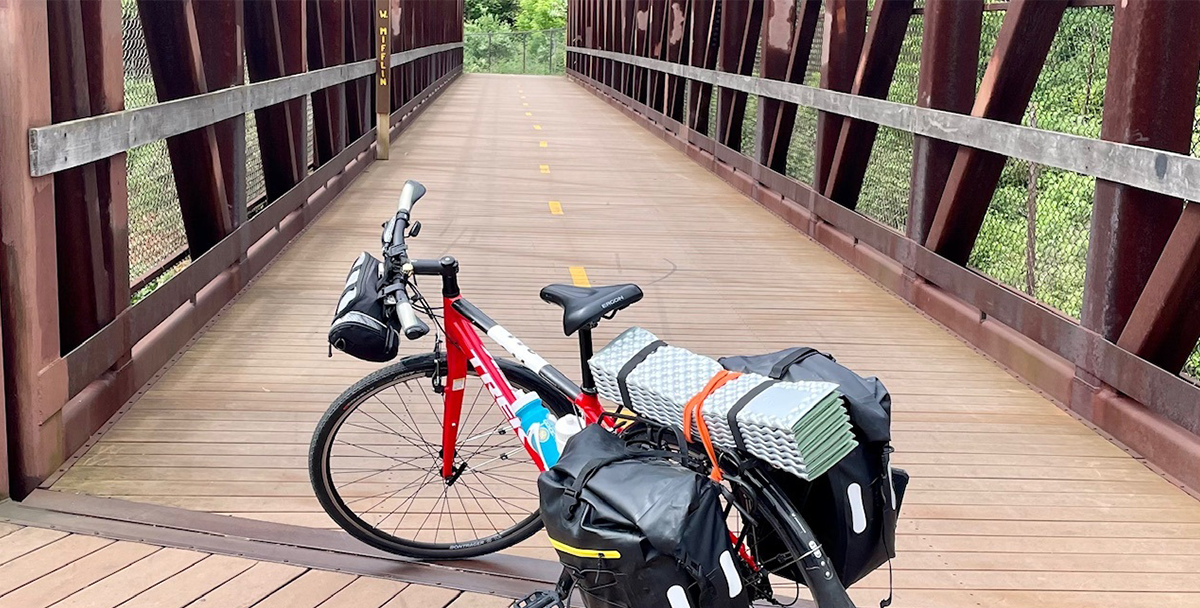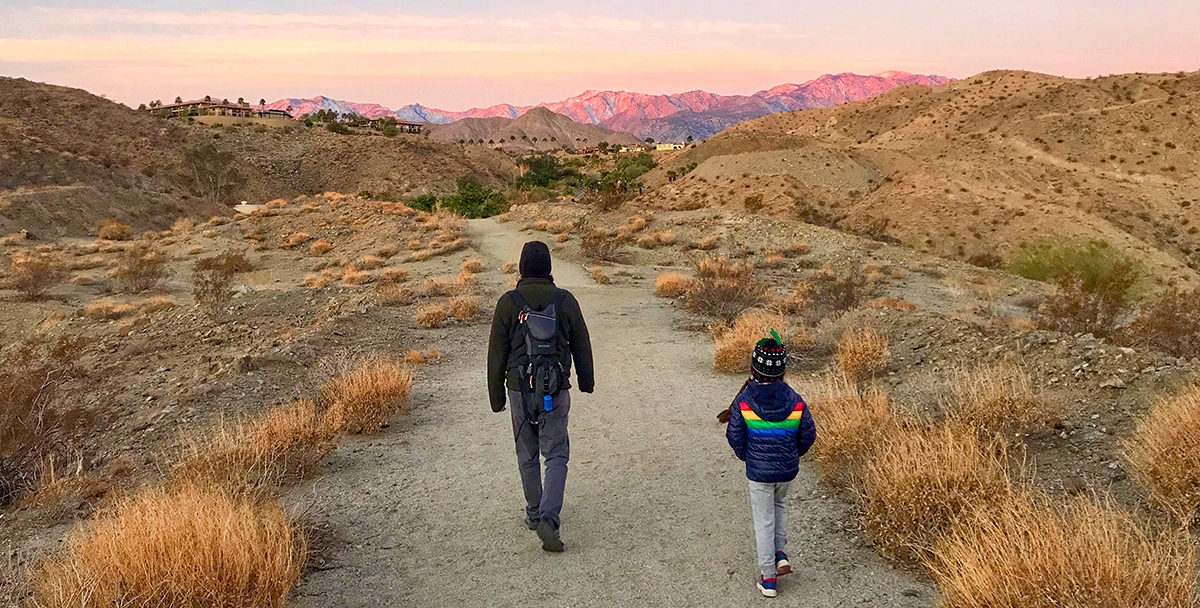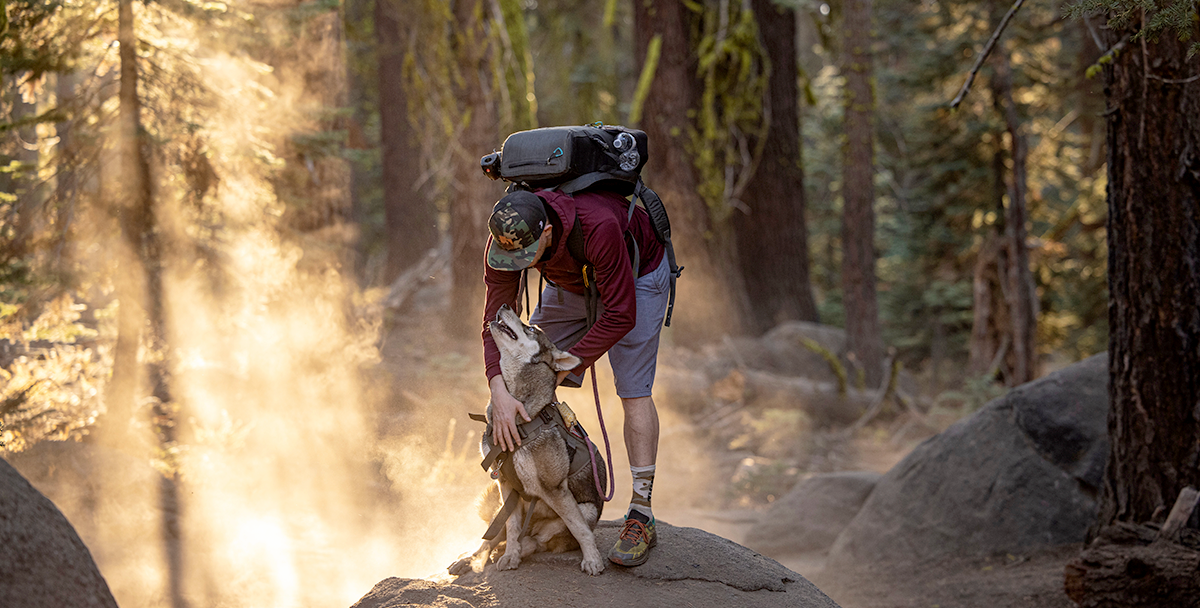Walking through the nature area near our home in Chicago during the pandemic, I noticed people with enormous cameras standing perfectly still. As a journalist, I recognized the equipment as advanced photography capable of incredible zooms and crisp portraits. Who were these people?
I soon realized they were bird-watchers waiting patiently for a glimpse of unique birds they could spot. Like many, this piqued my interest in whether I could learn more about the countless creatures perched in trees on my daily walks.
“I hear from people all the time who are pandemic birders and are still doing it now,” says Nate Swick, who hosts the American Birding Podcast from the American Birding Association, which has increased episodes from biweekly to weekly due to increased interest.
Have you considered Googling that red-winged bird you’ve been seeing daily or getting a pair of binoculars for a closer look? “It’s all about noticing and wanting to learn,” says Geoff LeBaron, Christmas Bird Count director for the National Audubon Society.
And spring offers the unique chance to see species one might not typically see on a walk through the park as countless birds migrate across the U.S., with May forecast as the peak for most of the country. “It’s a great time of year to get out and see a lot of really cool stuff,” Swick says.
Becoming a bird-watcher is easier than you may think. We talked to experts about how to start.
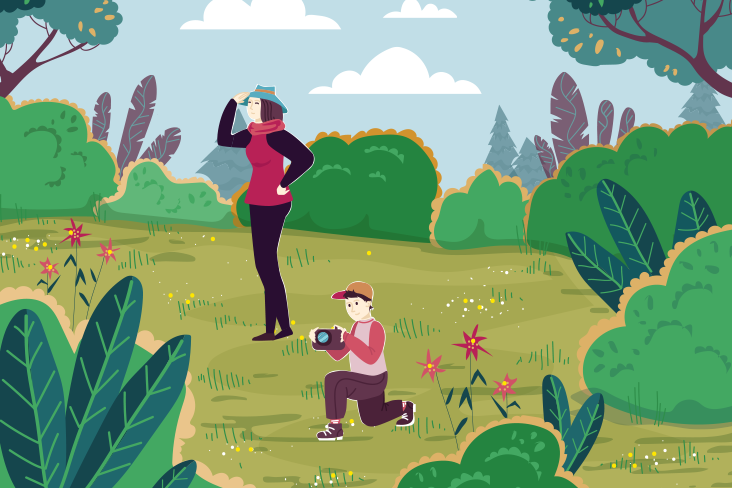
Start Small
Perhaps you’ve seen people outside awaiting a potential bird spotting with an enormous camera or what looks like intimidating equipment. But you don’t need fancy gear to begin. “You just need to get out and notice,” says LeBaron. “If you happen to have binoculars, that’s helpful, but you don’t have to have binoculars to get into birding.” You can buy a pair of affordable binoculars for under $100 to assist with identification, or visit your local library to see whether they have binoculars available to be checked out.
And you don’t even need to see the bird to identify it. Try the Merlin® Bird ID app from The Cornell Lab of Ornithology, which uses artificial intelligence to determine which birds you hear singing.
This is where I began. I downloaded the collection of Midwest birds available within the app, then started the sound recording whenever I heard a chirp in the park. Sometimes, it was too faint or far away to catch it, but so far my phone thinks I heard two house sparrows.
The delight in such an easy way to pinpoint songs to a particular bird, regardless of whether the app and I are spot on each time, inspired me to also check out the photo identification aspect – a new way for my toddler son (who loves to point out wildlife on walks) and me to learn more about animals and their names on excursions.
For bringing the birds to you, wildlife photographer Jocelyn Anderson suggests setting up a feeder. “The tray feeder offering black oil sunflower seeds is a popular choice and will attract many species of birds,” Anderson says. “If you’re looking to attract woodpeckers, they especially enjoy suet cakes.”
Make It Meditative
At its heart, bird-watching is the art of noticing, LeBaron says. Notice the sounds of birds and direct your attention to where they may be. The National Audubon Society advises checking places like power lines or fence posts, where birds rest. Pay attention to the markings on their wings and watch when they fly to another location, as the markings can look different during flight. These observations can be used to identify them.
Anderson suggests evaluating the shape, size and color of the bird. She adds that books like the Peterson Field Guide to Birds and The Sibley Guide to Birds can help begin your identification journey. “Don’t worry if you can’t be 100%,” she says. “Some birds are incredibly similar in looks.”
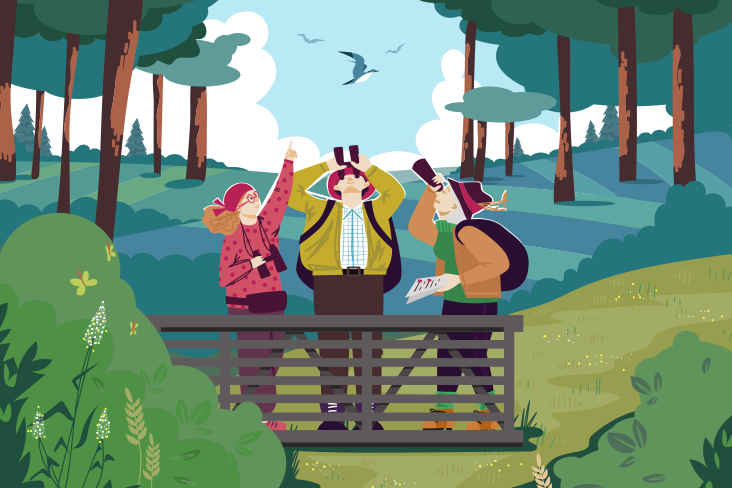
Find a Community
After your interest has been piqued, LeBaron says, take the next step. That might be finding your local Audubon chapter or nature center, which sometimes have bird-watching groups facilitated by a leader.
Birdability has been working to redefine birding to be more inclusive. The nonprofit accomplishes this through three “spokes” that represent “part of a wheelchair’s wheel.” The spokes focus on improving physical accessibility to birding sites, creating a community that’s welcoming and inclusive, and introducing those who have access challenges to the hobby through community outreach efforts.
The National Audubon Society is also actively finding ways to make birding and the outdoors inclusive for everyone. In a story from Audubon Magazine titled “How You Can Be an Ally Outdoors,” they provide several tips for allyship to help make those on the path feel welcomed and supported.
Swick says the bird-watching community is genuine and generous. Even if you find yourself next to a person with a “gigantic camera the size of your arm,” consider it a hobby where you can learn from that person about what you’re both seeing. “Birders are generally really nice people to hang out with, very earnest and genuine in their interest,” Swick says. “It’s a fun community to be a part of.”
Plant Native Plants
The National Audubon Society recommends adding native plants to your yard, which provide a habitat for birds. Consider researching which plants are native to your area or making your own backyard pollinator garden that supports insects and birds.
Check out Audubon’s database to find plants that birds will like. Plus, this could save you money – the organization says it can save costs by reducing the need for both watering and mowing, as native plants consume four times less water per year than lawns.
To Learn More
Try an online course from The Cornell Lab of Ornithology like the Joy of Birdwatching. It includes eight lessons and 14 instructional videos, all at beginner level.
The National Park Service also keeps a list of upcoming bird programs available in national parks, like joining their rangers for morning strolls. Search by date or state.

